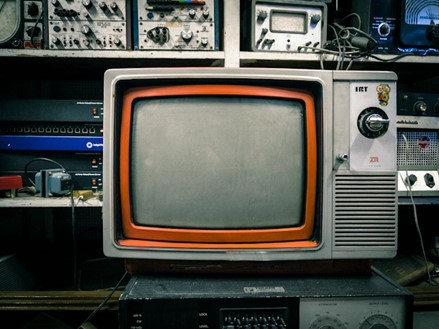Brendan Geier of Madison, New Jersey is a passionate enthusiast of pop culture. With an eye for trends and a deep appreciation for the evolution of television, Brendan is set to explore a topic close to his heart: the transformation of television from traditional media broadcast to the digital realm of YouTube and streaming platforms.
In this article, Brendan explains the dynamic shifts that have reshaped television viewing, tracing the journey from the days of scheduled programming and commercial breaks to the era of on-demand content and user-generated videos.
Television has undergone a remarkable transformation since its inception, evolving from the confines of traditional broadcast networks to the boundless realm of streaming platforms. As technology advanced, so too did the television industry, with the introduction of color broadcasting, cable television, and satellite transmission expanding the reach and diversity of programming. However, it wasn’t until the advent of the internet and digital streaming that television underwent its most significant transformation yet. Streaming platforms like YouTube, Netflix, and Hulu revolutionized the way we consume content, offering an unprecedented level of choice, convenience, and control over what, when, and how we watch.
Brendan Geier Explains the Birth of Television
The story of television begins in the early 20th century, with pioneers like John Logie Baird and Philo Farnsworth laying the groundwork for what would become one of the most influential forms of mass communication. Brendan Geier of Madison, New Jersey says that the first television broadcasts, consisting of grainy black-and-white images and limited programming, captivated audiences and sparked a revolution in entertainment.
The Rise of Broadcast Networks
In the mid-20th century, television entered its golden age with the advent of broadcast networks such as NBC, CBS, and ABC. Brendan Geier explains that these networks became household names, delivering a mix of news, sports, dramas, sitcoms, and variety shows to viewers across the country. Families gathered around their TV sets, forming shared cultural experiences and forging lasting memories.
 The Era of Cable Television
The Era of Cable Television
Brendan Geier of Madison, New Jersey notes that the introduction of cable television in the 1970s and 1980s ushered in a new era of television consumption, offering viewers access to a wider range of channels and programming options. Cable networks like HBO, CNN, and MTV revolutionized the industry, catering to niche audiences and pushing the boundaries of creativity and storytelling.
The Digital Revolution
Brendan Geier explains that the dawn of the 21st century brought about seismic shifts in the television landscape, driven by rapid advancements in digital technology and the internet. The proliferation of high-speed internet connections and the widespread adoption of smartphones, tablets, and smart TVs transformed how audiences consumed content, paving the way for the rise of streaming platforms.
The Emergence of Streaming Platforms
The launch of Netflix’s streaming service in 2007 marked a pivotal moment in the history of television, heralding the era of on-demand, subscription-based viewing. Streaming platforms like Amazon Prime Video, Hulu, and Disney+ soon followed suit, offering an extensive library of movies, TV shows, and original programming accessible anytime, anywhere.

The Streaming Wars
As the popularity of streaming platforms soared, competition intensified, giving rise to the so-called “streaming wars.” Media conglomerates like Netflix, Disney, and WarnerMedia vied for subscribers’ attention by investing heavily in original content, striking lucrative licensing deals, and expanding their global reach.
Netflix, for example, revolutionized the television landscape with its groundbreaking approach to content creation, investing billions of dollars in original series, films, and documentaries. From award-winning dramas like “Stranger Things” to critically acclaimed films like “Roma,” Netflix quickly established itself as a dominant force in the streaming market, setting a high bar for competitors to emulate.
Meanwhile, Disney, with its acquisition of 21st Century Fox and launch of Disney+, emerged as a formidable challenger to Netflix’s dominance. Leveraging its vast catalog of beloved franchises such as Marvel, Star Wars, and Pixar, Disney+ quickly amassed a loyal subscriber base, offering exclusive access to blockbuster hits and original series like “The Mandalorian.”
Similarly, WarnerMedia made a splash in the streaming arena with the debut of HBO Max, a platform that combines premium content from HBO with a curated selection of Warner Bros. films, classic TV shows, and original programming. With high-profile releases like “Game of Thrones,” “Friends,” and “Wonder Woman 1984,” HBO Max sought to attract subscribers with a diverse array of content offerings.
As the streaming wars raged on, consumers found themselves spoiled for choice, with an abundance of options competing for their attention and subscription dollars. From niche services catering to specific interests to industry giants vying for dominance, the streaming landscape became increasingly crowded and competitive.
In this fiercely contested market, content became king, with streaming platforms investing heavily in original programming to attract and retain subscribers. From blockbuster franchises and prestige dramas to niche documentaries and reality TV, the diversity of content offerings grew exponentially, catering to a wide range of tastes and preferences.
Ultimately, the streaming wars reshaped the entertainment industry, ushering in a new era of content consumption characterized by unprecedented choice, convenience, and competition. As media conglomerates continue to vie for dominance in the ever-evolving streaming landscape, the battle for subscribers’ attention shows no signs of slowing down, ensuring that the streaming wars will remain a defining feature of the digital entertainment landscape for years to come.
The Future of Television
Looking ahead, the future of television promises even greater innovation and disruption. Emerging technologies such as virtual reality, augmented reality, and interactive storytelling are poised to redefine the viewing experience, blurring the lines between traditional television and immersive digital worlds.
Conclusion
From its humble beginnings as a novelty invention to its current status as a ubiquitous form of entertainment, television has undergone a remarkable evolution. The transition from broadcast to streaming platforms reflects not only technological advancements but also changing consumer preferences and behaviors. Brendan Geier says that as we stand on the precipice of a new era in television, one thing remains clear: the medium’s capacity to inform, entertain, and inspire shows no signs of waning.








